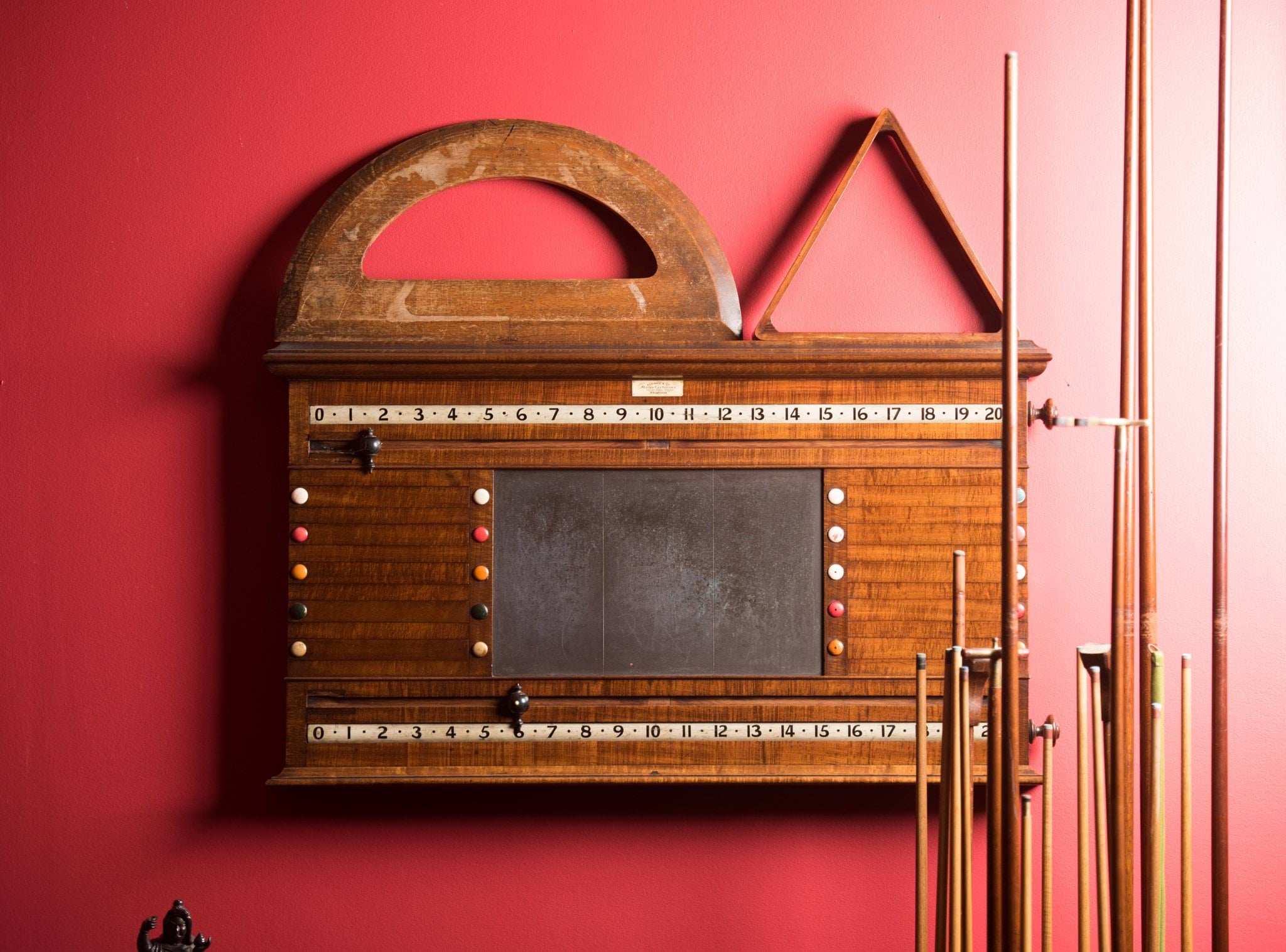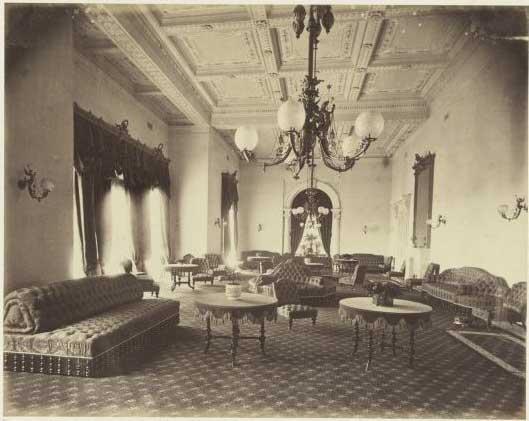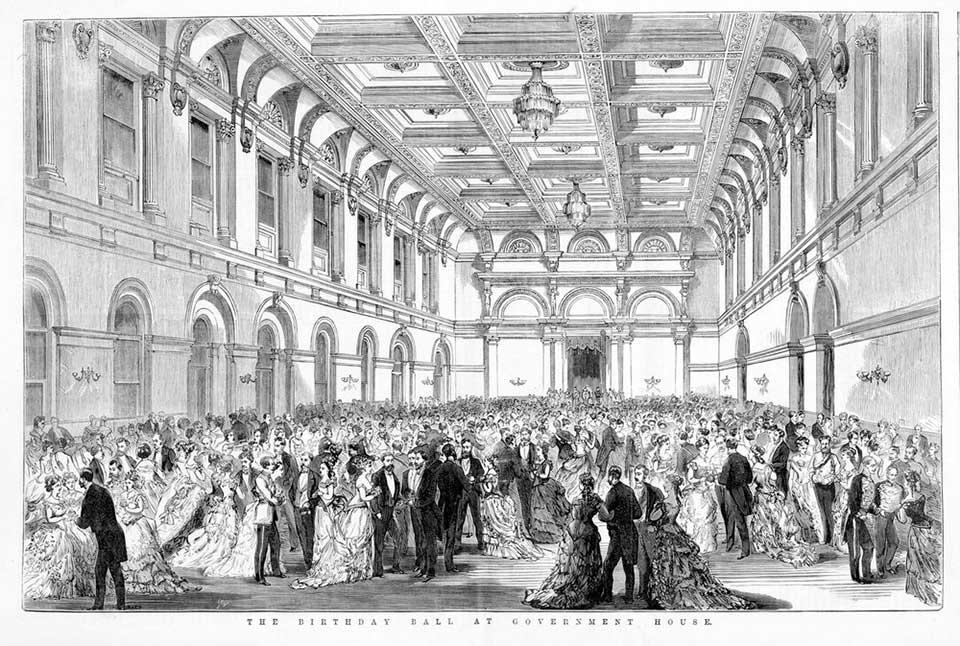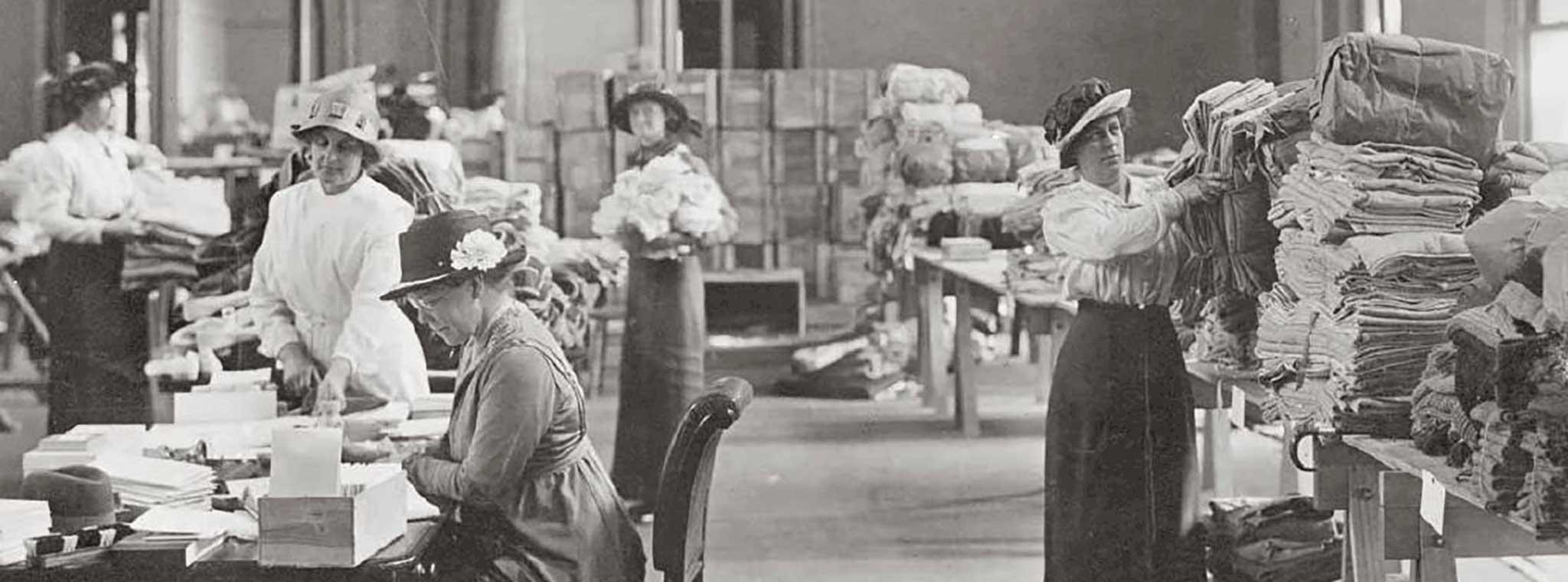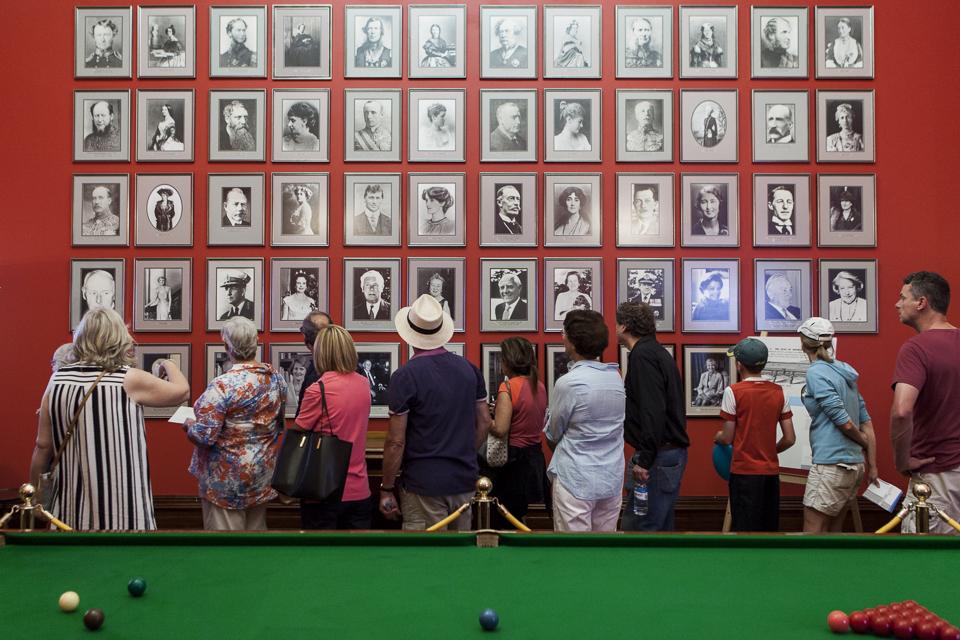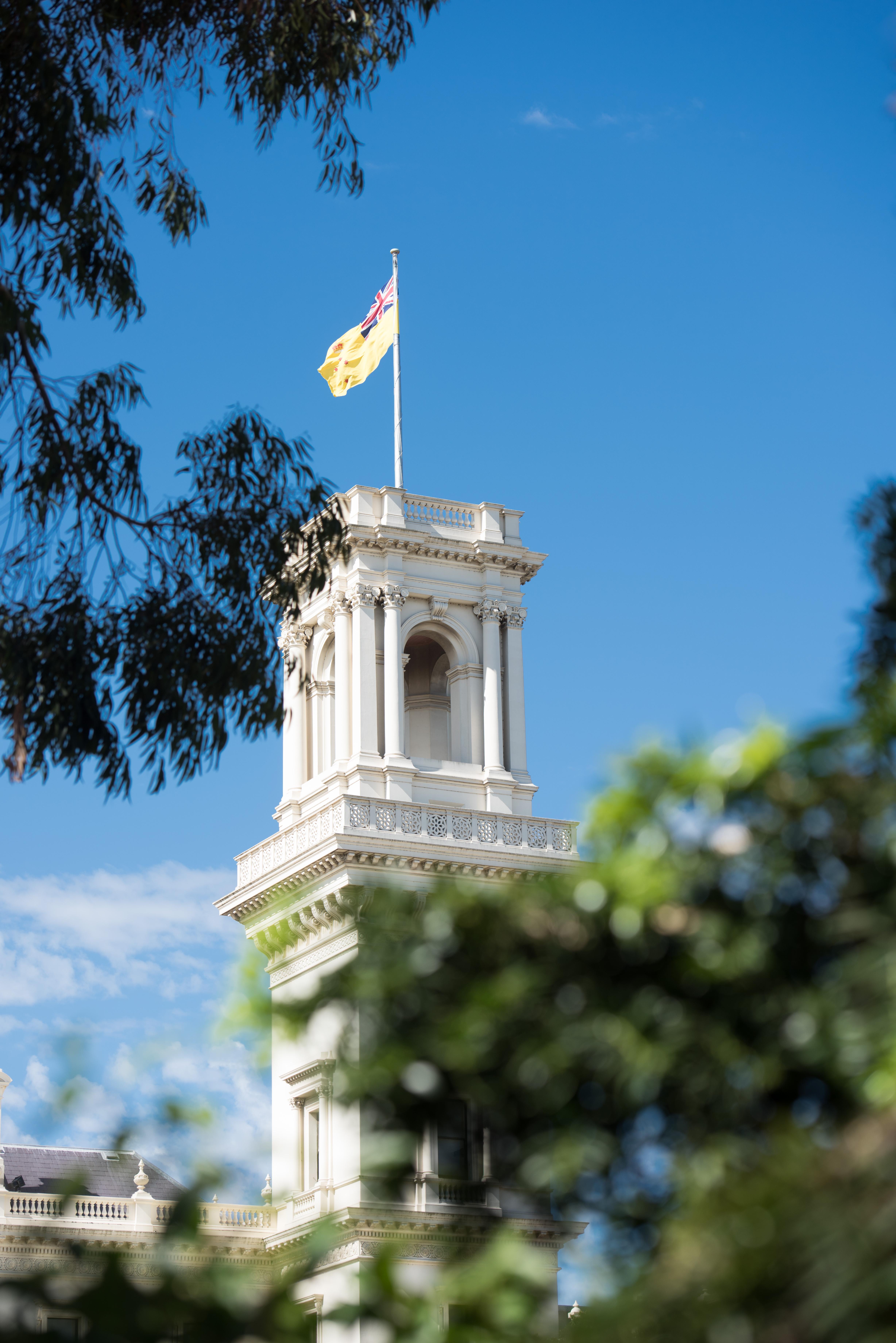The State Apartments include the Government House Ballroom, State Hall, State Drawing Room, State Dining Room and the Billiard Room
Take part in a virtual tour of Government House Victoria and learn more about the furniture and art that features in the State Apartments.
State Hall
The two-storey high State Hall provides a sense of space and scale when arriving through the State Entrance.
The ceiling’s cross-vaulted design is usually seen in cathedrals and is a unique feature of a residential home.
The State Hall leads to the Ballroom, State Dining Room, the State Drawing Room and the Billiard Room. It is used for small formal occasions, and as a reception space after ceremonies in other rooms.
State Drawing Room
Small award ceremonies, musical recitals, international welcomes and community receptions are held in the State Drawing Room.
Most of the furniture was custom-made for this room around 1876, and the 19th century Steinway grand piano is still used.
Australia’s most famous opera singer, Dame Nellie Melba, was a regular visitor to Government House and a caretaker recalled that when she played the piano ‘the servants used to listen outside the doors, spellbound by the diva’s voice.'
The State Drawing Room leads to the Conservatory, and large casement windows open out to the Fountain Court.
For the first 13 years after Government House was built in 1876, the public areas remained undecorated, causing guests to complain of an ‘awful white blankness’.
Conservatory
The Conservatory is an extension of the State Drawing Room and features views of the west lawn and the city skyline.
Conservatories, a feature of grand 19th-century houses, expressed a romantic desire to escape from artificiality and return to nature.
When the Duke and Duchess of Cornwall and York (later King George V and Queen Mary) were photographed in the Conservatory in 1901, it housed many exotic palms, ferns and potted plants.
State Dining Room
The State Dining Room has been redecorated many times but key features remain from the time the House was built.
The centrepiece is a telescopic table of Australian red cedar and Spanish mahogany that can seat 54 people. It was designed and constructed for the State Dining Room by James McEwan and Company, who also made the cedar and mahogany sideboard with elaborately carved woodwork surmounted by a crown.
Portraits of the Royal Family decorate the walls including King George V and Queen Mary, and the official portraits of King Edward VII and Queen Alexandra presented to the House in 1902.
Other portraits, including one of Dame Nellie Melba by Rupert Bunny, are on loan from the National Gallery of Victoria.
The grand piano with the walnut case was made by Sebastien Erard, a supplier of musical instruments to the Royal residences in Great Britain.
At a State Banquet in Lord Hopetoun’s time, the table centrepiece was of sugar made in the form of Parliament House, complete with steps, lights and all. It took the chef more than six months to prepare.
Ballroom
The Ballroom commands an entire wing of Government House. At 42m long and 16.7m wide, it is longer than the Ballroom at Buckingham Palace.
Three original crystal chandeliers, by Oslers of Birmingham who supplied Buckingham Palace, are striking features of the Ballroom. Converted from gas to electricity, the chandeliers each have more than 1,000 pieces of crystal.
The Ballroom is serviced by a supper room that runs its entire length and has its original serving bench and fittings.
The Minstrels’ Gallery, where musicians perform at functions, features a semi-circular sound shell that reflects the arches and scalloped sconces above the dais, musical motifs of Pan and his pipes in the upper corners, and an intricately gilded iron balustrade.
There is an oral tradition that when the plans for the Ballroom were presented to Queen Victoria for approval, she objected to the size as it was longer than the Ballroom at Buckingham Palace and asked that the building be reduced. However, by the time her request reached Victoria, construction had already begun.
State Chair
The focal point of the Ballroom is the State Chair. Only ever used by the Monarch or the Monarch’s representative, this State Chair was made around 1859 and has been used by all of the State’s Governors since Sir Henry Barkly.
The arched back rail features a crown and has ‘Advance Victoria’ carved underneath. It features lions’ heads carved on the arms, the cross of St George (England and Wales) and the cross of St Andrew (Scotland) on the legs, and the floral emblem of Ireland, the shamrock, on the skirt of the seat.
Decoration
When Governor George Bowen and Lady Bowen held the first official function to mark the opening of Government House in 1876 - inviting 1700 people to the Queen’s Birthday Ball - the Ballroom was white.
The Ballroom first acquired its distinctive blue colour scheme during redecoration works by Paterson Brothers in 1889, for the arrival of Lord and Lady Hopetoun.
Reporting on the decorations, the weekly social magazine, Tabletalk, said the Ballroom had been transformed from a ‘once ghostly ballroom … whose spaciousness only added to its general coldness and dreariness’ into ‘an exquisitely decorated hall, with soft colourings and rich upholstery’. It added:
‘The ballroom now presents such a truly palatial appearance that the heart of every true Victorian must feel justly proud at the colony possessing such a magnificent hall.’
After being painted over as part of decorations in preparation for the return of the Victorian Governor to the House in 1933, the colourful decorative scheme was reinstated during restoration works in the 1960s.
The restoration of the Ballroom in the 1960s took six months to complete and involved 700 books of gold leaf to decorate the ceiling alone.
Only a few planks of the New Zealand Kauri pine floor in the Ballroom have been replaced since the House was built.
The signature of Paul Gorman, who did the stencil work, can be found hidden in the stencil design on the right-hand side of the Minstrels’ Gallery.
Use of Ballroom
Community events are regularly held in the Ballroom which can accommodate up to 800 people.
The Ballroom is also used for award and investiture ceremonies, concerts and a range of community celebrations and contemporary events such as pitches by entrepreneurs, circus arts, model United Nations, and blood collection by the Red Cross.
The Ballroom has been used in the past by the Red Cross:
- as a depot for the collection and despatch of items for WWI troops
- as a central depot for the making of sheets, nightgowns, surgeons' gowns, draw-sheets, masks, and curtains during the 1919 influenza epidemic
- and as a venue for the making of surgical gowns and bandages during WWII.
The Ballroom also served as the assembly hall when Melbourne Girls’ High School(opens in a new window) was temporarily located at the House between 1931 and 1934.
During an 1881 ball held in honour of Prince Albert Victor and Prince George (future King George V), a piece of cement fell from the Ballroom cornice on to the head of the Secretary of Public Works, who was responsible for the upkeep of the building.
Billiard Room
The Billiard Room is accessed from both the State Apartments and the Private Apartments.
A distinctive feature of the Billiard Room is its octagonal timber-lined roof. The V-jointed boards slope upwards to form a roof lantern, providing natural light over the full-size Alcock 'John Roberts' billiard table which was installed at the time the House was built. Alcock and Company also made the revolving cue rack.
The famous billiards' player, Walter Lindrum, who was World Professional Billiards Champion from 1933-1950, was a regular visitor to Government House in his retirement. Lindrum played billiards with the then Governor Sir Dallas Brooks (1949-1963).
The glass-fronted cedar bookcase was made in preparation for the arrival of Victoria’s first Governor, Charles Hotham, by George Thwaites and Son and was among the furniture moved from the Governor’s former residence in Toorak House in 1876.
Decorating the Billiard Room walls are portraits of former Governors and their spouses, portraits of Lord and Lady Loch, and the spades used to plant commemorative trees at Government House by the Prince and Princess of Wales in 1983, and Prince William in 2010.
The Billiard Room is used for a variety of purposes, including as a waiting room, a meeting room, a reception room and an alternate dining space when required.
In 1889, the women of Melbourne contributed money to purchase diamond jewellery for Lady Loch, as a parting gift. Such was the admiration and general affection of the public for the Governor’s spouse and her patronage of the arts, the poor, and the wider community, that £1,600 was raised for a tiara, necklace, pair of earrings and two diamond stars for her daughters.
Government House furniture
A collection of original Australian furniture from the 1850s to 1870s, custom made for Toorak House and Government House, is still used today.
Toorak House furniture
Much of the furniture in the State Apartments was either custom made for Government House, or transferred in 1876 from Toorak House.(opens in a new window)
The colonial Victorian Government furnished Toorak House for the incoming Governor Hotham in 1854, and much of it was supplied by local cabinetmaker George Thwaites and Son.
The Government paid George Thwaites £4550 5/- and 6d for furnishings for Toorak House, in preparation for the arrival of Governor Hotham and his wife, resulting in some critical newspaper reports about the amount paid.
However, some pieces are still used today which date back to Toorak House, including the State Chair.
Other furniture items believed to have been brought from Toorak House, and in use today, include:
- a cedar bookcase, with intricate carvings, in the Billiard Room
- a pedestal sideboard carved with the crown and featuring Queen Victoria’s monogram
- a cedar hall table and four cedar hall chairs, which have Queen Victoria’s monogram (VR) carved into the back
Cabinetmakers
George Thwaites and Son, and another local cabinetmaker, James McEwan and Company, were contracted to make the furniture for the new Government House.
The Weekly Times reported in April 1876:
‘Manufactured in Melbourne by local tradesmen, from designs furnished by the most advanced authorities in England, the furniture is of a description which cannot be surpassed. The rarest and most durable woods only are used, and for this purpose the forests of Victoria, Tasmania, New South Wales, New Zealand and Queensland have been laid under contribution.’
‘Their united efforts will afford future generations cause for a feeling of just pride at the perfection attained at this early stage of the history of this colony.’
Tower
The 44-metre high ornamental tower is a Melbourne landmark and features an arcaded lookout and decorated cornice.
The Governor's Standard
The Governor’s Standard is flown from the Government House tower, and at the front gates at Government House, when the Governor is in the State of Victoria. The Governor’s Standard is also flown on the vehicle in which the Governor is travelling.
The Governor's Standard is the same design as the State Flag of Victoria, with the blue background replaced by gold, and the red stars depicting the Southern Cross. The gold background represents Victoria’s golden past and its promise of a golden future.
The Governor’s Standard was approved by Her Majesty Queen Elizabeth II in 1984, and has been used by all Governors of Victoria since that time. Previously, the Standard used by all Victorian Governors since 1870 had been the Union Flag with the Badge of the State emblazoned in the centre.
The Commonwealth Standard
By convention, the longest-serving State Governor may be called upon to fulfil the duties of Administrator of the Commonwealth of Australia when the Governor-General is overseas or cannot otherwise act.
Updated
